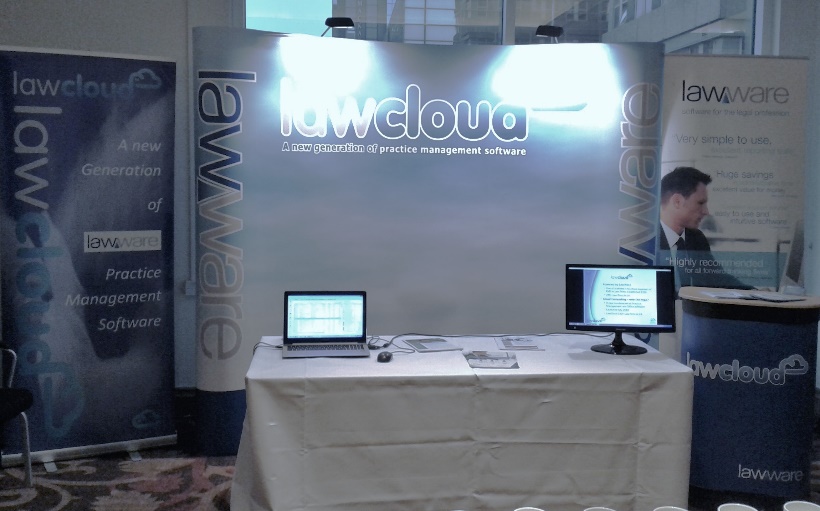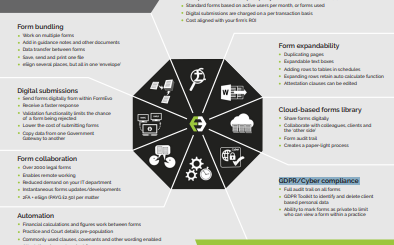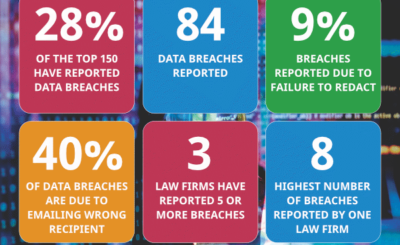Business Continuity, Lawyers and the Cloud

With our official LawCloud website due to launch very soon in mid-January and LawCloud itself launching officially on 2 February 2010 at Microsoft’s office in Edinburgh, we thought it may be appropriate to share a rather poetic introduction to the subject of cloud computing in the UK legal market with a focus on business continuity. This piece is shared as a guest article by Paul Humphreys, Technical Director of The Law-Writer Partnership Oxford UK. We hope you enjoy it.
“BC for Lawyers: it’s like Alice in Wonderland but without the Mad Hatter
“Backup onsite offsite. Backup onsite offsite. Remember to backup onsite offsite,” the Hatter dashed to tell us at every tea party until we all submitted. Time was forever stuck at 6:00 and the Queen of Hearts awaited every opportunity to decapitate us if we broke the law.
And then arose The Cloud. The Mad Hatter momentarily fell silent as he stared up at the sky. Time moved, the clock ticked, The Red Queen seemed to have disappeared. In an instant we were all going to live happily ever after. But the moment passed and the Mad Hatter quickly started up again. “Backup offsite onsite. Backup offsite onsite. Remember to backup offsite onsite,” he exclaimed.
Now, back down to earth, the question is whether or not we should trust entirely to The Cloud to be always present with its applications and our data. Yes, we agree that it’s all in the hands of experts; and yes, we can get at it from anywhere while the going’s good. Indeed we can copy back our own data whenever we like. But we can’t always copy back the application that runs our data, yet our data is not fully alive without the application that gives life to it. Cloud-based software described as multitenant is highly complex software, by no means is this software simple or standalone which you can run equally on your own PC. Yes, we can have our data back, but, unless we also have a means to run the same data identically as we have processed it within The Cloud, we remain potentially snookered should we become disconnected, however caused, from the parent application.
So, on the face of it, it might seem ideal if we could grow a kind of software that primarily processed our data while it was hosted in The Cloud; but, at the same time, software that would enable the same application to run locally if we could not get to it online, or perhaps did not need to get to it online. So we envisage a twinned system that is both Tweedledum and Tweedledee. In our mind’s eye we construct a network that is simultaneously on the outside and on the inside at the same time. Is such an arrangement possible outside of Wonderland? What further benefits might flow in addition to those obvious for Business Continuity? We know that the cost of local storage of data is, probably, at least one order of magnitude less that the cost of the same volume of data stored in The Cloud.
Let’s apply this idea for concurrent offsite and onsite data to a real-life example. A typical High-Street law firm might have accumulated, say, two thousand clients in and around its local neighbourhood in its home town. All case-data must of course be retained, and let us suppose that up to half a dozen individuals, lawyers and administrators, could possibly be involved in the progress of any one case for any one client. So a Cloud-based application appears to offer an ideal platform in a world where expert opinion and administrative action might be required from a number of different geographic locations at different times. We could then further extend this image by taking into account some limited yet helpful access to some designate client-data by lawyers from the other side. This scenario provides for consideration of many of the major elements of Cloud concern including client-confidentiality, risk exposure of private data, logging and monitoring and availability of access tempered with permissions that should govern all online activity, and so on.
The legal system is often considered by its consumers to be ‘slow’. But if your own Solicitor – let’s call her Alice – is about to complete the conveyance of your new house while you are parked outside the Estate Agent’s office waiting to collect the key, but with heavy snow piling deeper about you, and with your hungry, tired, children jumping around on the back seat of your car, then time really does crawl down to near Mad Hatter time: the hands of your watch seem not to move at all, and your own hands are freezing cold. Alice has just lost her connection to The Cloud because of a local BT fault affecting the ADSL line to her office, but your legal data remains very safely protected in The Cloud. Alice knows that she could easily get to your document using her Internet connection at her home, but the snow is very much worse today than it was yesterday, and it would take her hours even to get out of the car park. Tweedledum is simply not available to Alice. So Alice surfs instead to Tweedledee sited within the four walls of her office. Tweedledee has been updated automatically by Tweedledum while the ADSL connection was present. Alice then telephone’s your Agent with the vital reference she needed to get from your file, and you get the key.
The above is one client in two thousand. But Alice’s Cloud need only hold her current cases. Closed cases need not remain in The Cloud so are off-lined and stored locally on Tweedledee but can be moved back onto Tweedledum for resurrection online if needed. Let us say that Alice and her colleagues at her firm manage 20 cases concurrent at any one time; this implies a case-to-client activity ratio of 20:2000 which translates to 1:100 in terms of necessary online data storage space to hold current work. The model lends itself to Business Continuity, low cost of online data storage through better consideration and management of data, and the advantage of having identically replicated applications with their data held in tune both offsite and onsite. So: offsite is used for daily routine primary access; onsite is there for data archive and application backup accessible offline.
Given the emergence of The Cloud, if such a computing model were available it would seem to hold out multiple advantages, made even more attractive at very low cost by utilizing old (Windows) lamps as new (Linux) lamps to meet the changed onsite requirement. In the end, it seems there is no single place outside of Wonderland where we can entrust the whole of our systems for all of the time, not even to the security of The Cloud. From wherever we routinely work we should be able to continue operating on a copy of our applications and our data: always on standby, ever-present, at hand, held safe for us in a familiar place, friendly and warm, right there in front of us in local view through the looking glass at the office.
—
Paul Humphreys is Technical Director of The Law-Writer Partnership Oxford UK.
Paul can be contacted via www.law-writer.com.“








1 Response
[…] This post was mentioned on Twitter by Jeffrey Brandt, WardblawG and others. WardblawG said: RT @GavWard RT @youblawg RT @LawWareUK: RT @LawCloudUK Business Continuity, Lawyers and the Cloud http://t.co/bTQ5oiO via @LawCloudUK #law […]